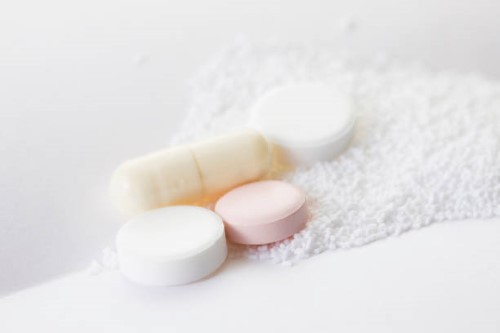August 07, 2022

There are two kinds of tablets' binder. The first is a dry one which is mixed with powder before compression, referred to as direct compression. The other type is one that is liquid in nature. Below we will discuss the differences between these two kinds of Pill press. What's important to know is that they're both equally effective in terms of granulation. We'll look at their various applications to gain a better understanding of them.
Compressibility
A tablet's granulation properties depend on the binder's quality it contains. Insufficient or excessive tablet coloring could lead to difficult or fragile particles. Over-consumption of granulating fluid can cause coarse or porous granules. The amount of granulating liquid to be used should be measured carefully prior to making it part of the tablet's formula. A binder that is less viscous will be distributed more evenly.
Flow
Tablet granulation is a typical process used to manufacture tablets. It improves the uniformity of content it also reduces cross-contamination and increases the compression of drug substances. The final product should have uniform dispersion of all ingredients. Granules should be close-spherical and lack segregation, and they must have excellent disintegration properties. Granules should also be able to contain sufficient fines to fill the empty spaces between coarse granules.
Binders made of natural ingredients
The quality of the tablet formulations' natural binders determines how consistent of the final product. The brittle and hard grains could result from a lack or excess quantities of natural ingredients. A lack of raw materials from nature can result in coarse and uneven grains. This can be avoided by carefully controlling the amount of natural material and then adjusting it until you get the desired white pill binding agent quality of granulation. Premixes that are custom-designed for customers made of natural raw materials that are certified are a great way to streamline the creation, handling and manufacturing process.
Polymer binding agents
Polymer binders are an important part of tablet granulation, together with the excipients. They are able to enhance the tablet's hardness, uniformity, or dispersion depending on the purpose for which they are used. The selection of the right binders must be done according to the limitations of the equipment, the viscosity developed in the solution, as well as the wetting capability of the powder. The choice of binding agents will also be influenced by the amount of water added to the mixture of excipients.
Optimum Fillers
The formulation of tablets is extremely dependent on the form and concentration as well as the mixture of excipients. Other pharmacological characteristics can be affected by the filler composition. A 1:1 ratio of MCC to lactose is the ideal ratio for tablets that are uniform in size and friability. However, the composition of excipients can alter the disintegration rate and hardness of tablets. To maximize the granulation of tablets, pharmacists should make use of fillers that will not lose their properties.
Components of a tablet binder
Binder, also known as a binding agent, is a component used in the production of direct compression tablets. It is crucial to the production of direct compression tablets because it holds the inactive ingredients as well as active pharmaceutical ingredients together. The binder must possess the proper properties to encourage compact and cohesive compression. It must be commercially available and comply with regulatory requirements. Additionally, it must encourage the creation of granules that can be compressed directly.
Posted by: Work force Beauty at
09:39 AM
| No Comments
| Add Comment
Post contains 577 words, total size 4 kb.
35 queries taking 0.0156 seconds, 65 records returned.
Powered by Minx 1.1.6c-pink.









